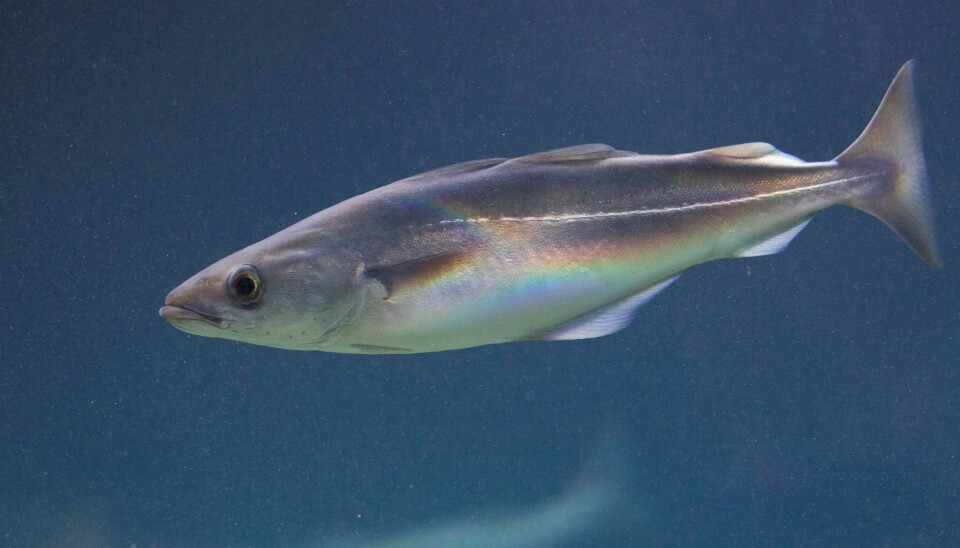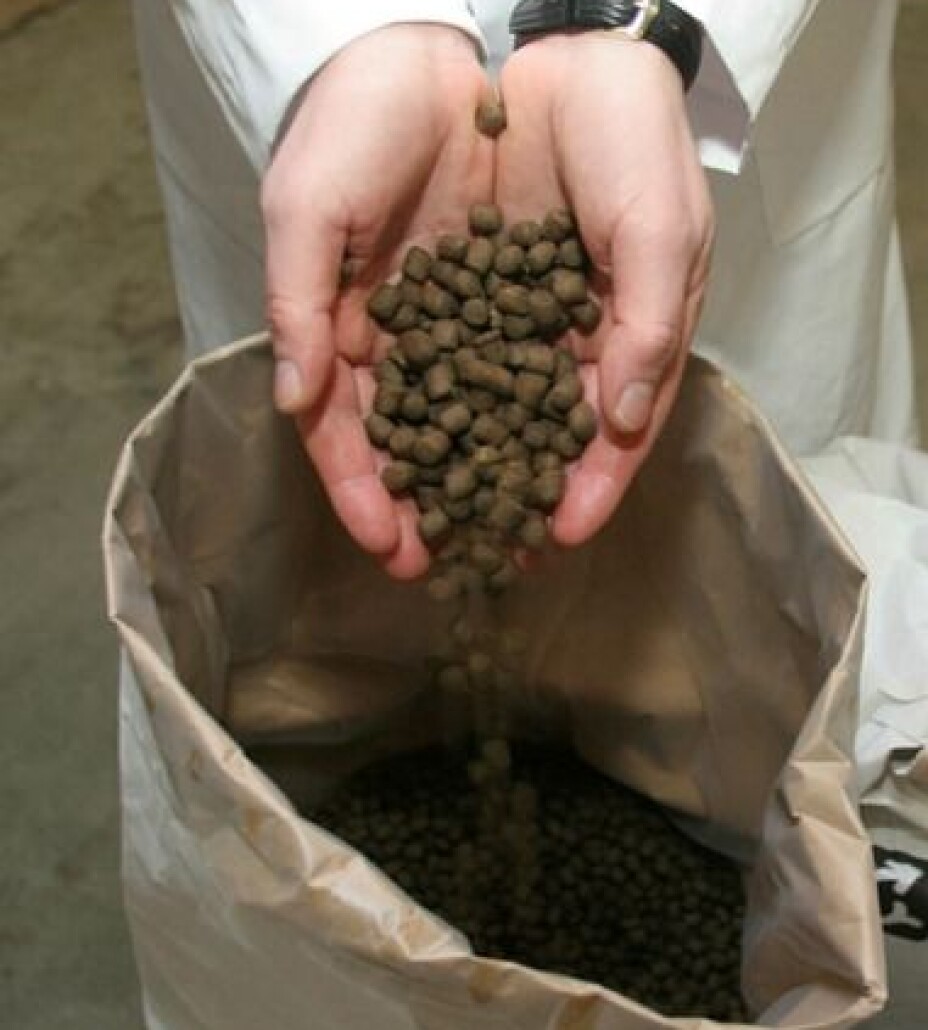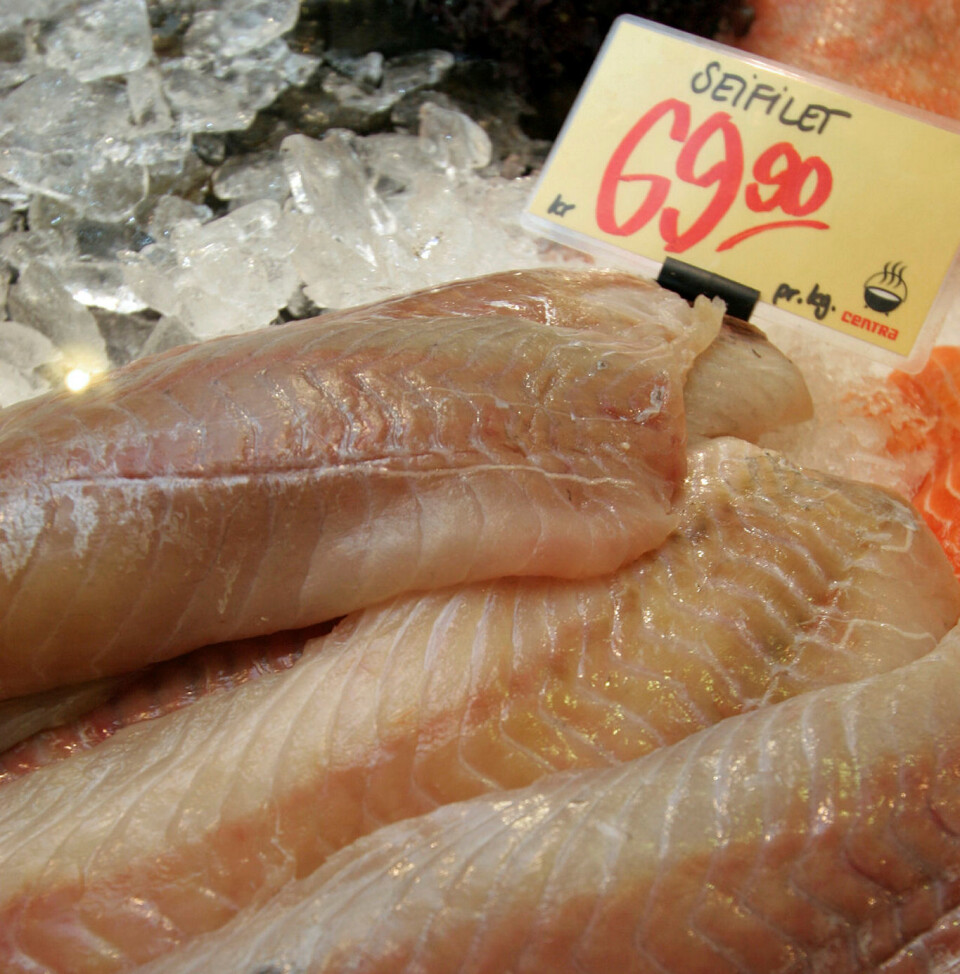
Who cares about pellet saithe?
There’s one thing we can say about men from Northern Norway that are over 60: They sure care about pellet saithe. And not just a little – they care about it in a way that is statistically more significant than everyone else in Norway.
This is according to a Nofima survey which was conducted as part of a research project regarding coexistence in the coastal zone. The survey sampled 1000 respondents above the age of 18, equally divided between men and women from all over Norway. The result made us ask: Why are men from the high North all up in arms about it, while others seem to think that “fish is just fish”?
If you didn’t already know, pellet saithe is what we call saithe that live near fish farms and eat residual feed from the production of salmon and trout. When farmed fish is fed, some of the feed ends up in the sea outside the net-pens, where it is consumed by nearby fish and other marine species.
Feed is given to farmed salmon in the form of small, brown pellets that resemble the dry food you would give your cat or dog. The difference is that these are tailored to the salmon’s needs, with all the vitamins and minerals it requires to grow and thrive.
A pellet saithe, therefore, is a saithe which has ingested pellets from a fish farm.
When a fish eats something that’s not “natural”, we should expect that it will have an impact on the way it tastes, smells or looks. Shouldn’t we?
Most people don't care
In social and traditional media, one can read that pellet saithe is unappetising, has poor quality and is not suitable for human consumption. It appears that there are a lot of people who think that pellet saithe has no place on a dinner plate. But is that really the case? Based on the findings from our survey, the answer is no.
It turns out that most people who responded to the survey don’t really care about whether the saithe they consume has ingested feed from a fish farm (sorry, 60+ year old male respondent from northern Norway, but you are not like most people). They claim to be neutral towards claims that pellet saithe tastes or smells different from other saithe.
A possible explanation for this can be that the majority of the respondents have not had any practical experience with this issue, as saithe fillets can easily be purchased in grocery stores. With store-bought saithe, you don’t really need to think about what the fish has eaten.
Men over the age of 60 from Northern Norway, on the other hand, probably have more hands-on experience from fishing their own saithe. They may have seen pellet mass come out of the stomach of saithe when the fish is gutted.
But do pellets really have an impact on the quality? According to research, the answer is both yes and no. Objectively speaking, in blind-test trials which can be replicated, when people are served pellet saithe or fish caught in areas without fish farms, the taste of pellet saithe is not deemed to be inferior. Only small differences were observed for other quality measurement parameters such as fillet gaping and colour.
Emotions affect the dining experience

There are also studies which conclude that fish caught close to fish farms are of a slightly lesser quality compared to fish caught in areas without fish farms. However, the trials also showed that other factors, such as the fishing method used, is more important than the stomach contents of the fish in terms of quality. So, what is it that makes people call pellet saithe “only fit for lobster bait” when research shows that there is not much difference in quality?
Read more: The quality of saithe feeding close to fish farms has been documented
To exaggerate a little: Imagine a scenario where you’re out fishing with the kids, and as you’re gutting the fish, you discover that the stomach is full of live spiders.
Quality is more than the objective measurement of the taste and texture of the fish meat. It is important to keep in mind that for some, quality can also include the actual fishing experience. Catching saithe with a stomach full of pellets could probably ruin the fishing experience for some. Maybe the fishers find the pellets in the stomach of the fish to be unappetising because it’s an unexpected sight, or that it feels unnatural. Finding something unappetising is a personal, subjective feeling which is probably quite independent of whatever objective research can tell us.

To exaggerate a little: Imagine a scenario where you’re out fishing with the kids, and as you’re gutting the fish, you discover that the stomach is full of live spiders. The meat may be just fine, and the colour and texture too. But would you serve such a fish for dinner, even if you knew for a fact that the fish meat was of high quality? There are a lot of emotions in connection with food – especially the food you forage or catch yourself.
Be it on pellets or herring
The same quality issues are often reported for pellet saithe and fish that have consumed large quantities of herring or other small fish; namely enlarged livers and soft texture.
For that reason, fish that has overfed – be it on pellets or herring – should be handled more gently and preferably be caught using gentler fishing methods if the goal is to maintain optimum quality. Furthermore, anyone who has gutted fish that has overfed on herring knows that it doesn’t quite smell like roses when the fish is opened. However, it often feels more “natural”, and therefore acceptable, than if it was a mass of pellets that oozed out of its stomach. Even if the meat were to taste good and look good, the entire fish might be perceived to be of poor quality because it feels repulsive and unnatural. This subjective perception of quality is real for the person catching the fish.
As part of this project we will look more closely into the factors involved in the perception of quality and how to measure them, with the aim of establishing how fishers and fish buyers assess quality, and what makes pellet saithe an unwanted commodity for them. Perhaps it is the case that researchers and fishers are in fact talking about two different things when they are discussing quality?
So now what?
Northern Norwegian men over the age of 60 are unlikely to be convinced that the end quality is not reduced even though the fishing experience itself is not what it used to be before we started farming salmon. And we should probably be okay with that.
We always welcome clear opinions in the debate on how coastal industries can work well together. However, we must not wind up thinking that this is a widespread issue among most people. From our survey we have learned that the people we asked don’t seem to care about whether pellet saithe has a poorer taste or if it is less appetising than other saithe.









